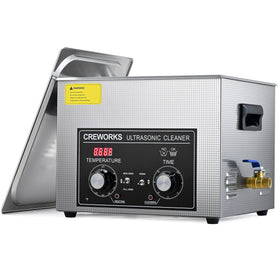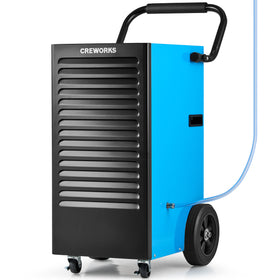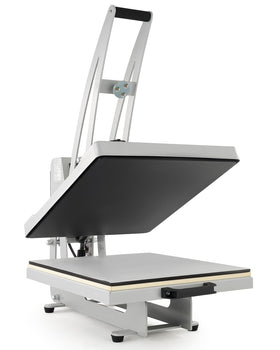With over 10000+ orders
With over 10000+ orders
DTF printing technology has taken the world of heat press machine t-shirt printing by storm, and there's a good reason why everyone from small t-shirt shops to major print operations is making the switch. But what exactly is DTF printing, and what makes it better than all the alternatives we have been using before?
What does "DTF" mean in printing beyond just the acronym?
Let's explore!

Simply put, DTF stands for “Direct-to-Film,” and DTF printing is a rather recent printing technology that prints designs directly onto a special film, then transfers them to fabric using heat and pressure.
The advantage of DTF printing is that it maintains the best aspects of the previous printing technologies that have dominated the market for a long time: it has both the durability of screen printing and the flexibility of digital printing.
Also, DTF printing works on virtually any fabric, produces incredibly vibrant colors, handles complex designs with ease, and doesn't require the massive setup costs of traditional methods.
Whether you're printing one shirt or a thousand, DTF delivers consistent, professional results.
DTF printing on shirts is quickly becoming the new standard for custom apparel businesses that want to offer unlimited design possibilities without the limitations of traditional methods.
Whether you're a startup looking to enter the custom apparel market or an established shop wanting to expand your capabilities, DTF printing offers the versatility and quality your customers demand.

DTF printing involves a straightforward four-step process that produces professional-quality results every time:

Unlike screen printing, which requires separate screens for each color, a DTF printing machine can print all colors simultaneously using digital technology. Modern DTF systems can produce 3-8 transfers per hour on entry-level equipment, with industrial-level systems being even more efficient.
The white ink circulation system stops settling and clogging, while automated cleaning cycles maintain consistent print quality without constant manual intervention.
| Category | DTF Printing | Screen Printing |
| Best For | Complex, multi-color, or photo-quality designs | Simple, bold designs with solid colors and basic graphics |
| Setup Costs | None | $3–$5 per color (setup fee) |
| Turnaround Time | Fast – no screen prep needed | Slower due to screen preparation |
| Material Compatibility | Works on cotton, polyester, blends, and synthetics | Works well on cotton and some blends |
| Color Vibrancy | Excellent, even on dark fabrics (white ink base) | Strong, especially with solid inks |
| Durability | Good, but generally less durable than screen printing | Excellent – can last 50+ washes |
| Cost (Per Unit) | $0.75–$1.00 per sq. ft. | $0.50–$0.75 per unit (for high volumes) |
| Best Volume Range | Low to medium volume (under 25–50 pieces) | High volume (ideal for 100+ identical items) |
| Break-Even Point | More economical for under 25–50 items with complex designs | More economical for simple designs and larger quantities |
| Specialty Options | Limited specialty ink effects | Wide variety – metallic, glow-in-the-dark, puff, textured, etc. |
| Use Case (Business Model) | Custom, on-demand, multi-color jobs; one-offs | Bulk production of identical designs |
Some people choose DTF printing over screen printing, and many other people prefer screen printing over DTF printing: it all depends on the type of printing task you need to do.
Choose DTF printing over screen printing if your work mainly involves designs that have complex multi-color gradients and/or photo-quality prints.
DTF works best for these because it is more economical: there are no setup costs. Also, the turnaround time is much quicker: production is faster since you don't have to do screen preparation.
Plus, it's incredibly versatile. DTF printing can work seamlessly on cotton, polyester, blends, and other synthetics, with a white ink base giving vibrant colors even on dark fabrics.
Screen printing is still preferable if you have large volume offers where you need large production runs, and you are working on designs that are simple, bold, and with solid colors and base graphics.
Plus, you get access to a fantastic range of specialty inks like metallic, glow-in-the-dark, and textured options, adding a unique touch to your creations.

If you are on a budget, then screen printing might be a preferable option. DTF printing is the costlier of the two.
The break-even point, where DTF starts to become more economical than screen printing, usually falls within the range of 25-50 pieces, largely depending on how complex your design is.
Whether you go for Screen printing or DTF printing also depends on your business model. If you're doing custom one-offs or designs with lots of colors, DTF is your answer.
If you're printing 100+ identical shirts, screen printing probably wins on cost.
What is DTF printing on shirts without the right equipment? Here are the top options for getting professional results:
The L1800 DTF Printer represents excellent value for businesses getting started with DTF printing. This A3 printer delivers 1440x1440 DPI resolution and prints a full A3 sheet in just 12 minutes, making it perfect for small to medium production runs.

The advanced white ink circulation system uses a siphon pump to continuously stir ink, preventing the settling and drying issues that can clog printheads and ruin print quality.
The automatic cleaning function runs every 6 hours to maintain printhead performance, while the complete kit includes everything needed to start printing: curing oven, DTF film roll, hot-melt powder, and all necessary inks.
For shops processing 20-50 transfers daily, the L1800 provides professional results without the massive investment of industrial equipment.
The XP600 DTF Printer takes DTF printing to the professional level with significantly faster production speeds and enhanced reliability features.

This upgraded system prints a full A3 in just 3 minutes - four times faster than the L1800 - while maintaining exceptional 720x1440 DPI print quality. The advanced white ink system prevents settling and ensures consistent color reproduction on both light and dark fabrics.
Like the L1800, it includes automated cleaning cycles and comes as a complete solution with curing oven, films, inks, and powder.
The XP600 is ideal for established shops or businesses planning to scale quickly, as its speed advantage becomes significant when processing 50+ transfers daily.
The higher initial investment pays off through increased productivity and reduced labor costs per transfer.
What is DTF printing going to look like in the next few years? The technology is rapidly evolving, with faster printers, better inks, and more automated systems entering the market constantly.
The question isn't whether DTF will continue growing - it's whether you'll be part of that growth or watching from the sidelines. With equipment costs dropping and technology improving rapidly, there's never been a better time to explore what DTF printing can do for your business.












Leave a comment